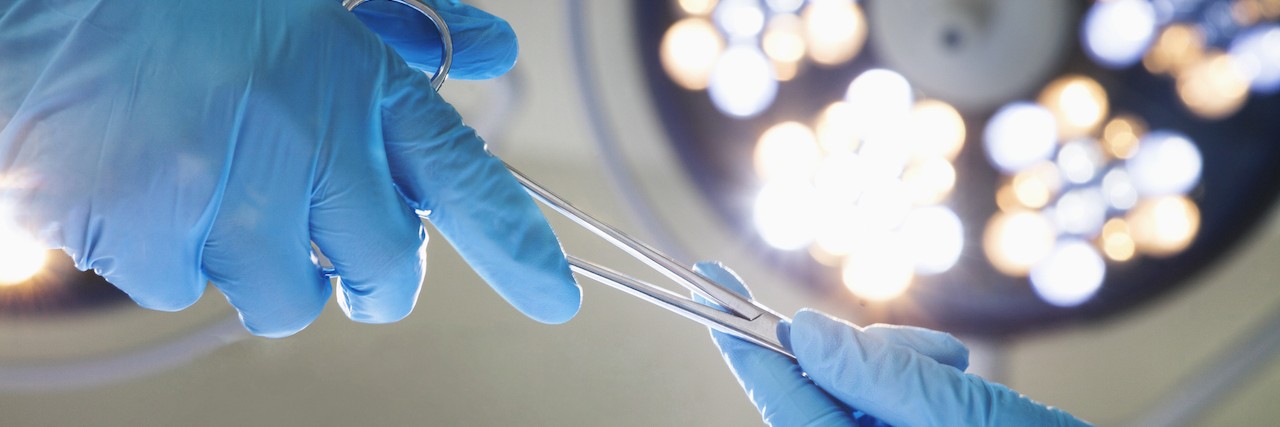When people learn I survived cancer of the appendix, they often ask if I just needed an appendectomy.
If only.
Unfortunately, the vast majority of appendiceal malignancies are discovered as stage 4, when it’s called pseudomyxoma peritonei (PMP). Once found, tumors have burst through the appendix and spread to the outsides of various organs within the abdomen, and usually attach to the abdominal lining called the peritoneum. The specialists that treat our disease say it’s as if a bag of miniature peas has spilled within the abdominal cavity.
Once any surgeon sees such extensive disease, they know something is seriously wrong, but usually don’t know what they’re dealing with. Unfortunately, many patients with PMP go misdiagnosed by clinicians who aren’t trained to treat this rare disease that affects only 2 in a million people every year. Patients are routinely told they have only a year to live, because local pathologists can’t diagnose it, and even if they do, local surgeons don’t know how to treat it.
I was lucky my surgeon had seen one case of PMP earlier in his career, so he knew what he was dealing with. When he operated on me for what he thought was a burst appendix, he found my omentum studded with tumors (did you even know you have an omentum?), and he found a cancerous phlegmon surrounding my enlarged appendix. Because he recognized the disease, he conducted a right hemicolectomy, which means he removed the appendix and one foot of large intestine. This is just the beginning of treatment.
Once the source of the cancer is removed, specialists must then remove the tumors that have spread throughout the abdomen. Luckily, most cases of PMP are contained within the abdominal cavity. Although the tumors spread within that compartment, they typically don’t move outside of it. For patients reading this now whose PMP has spread outside their abdominal cavity, please don’t fear and read on, because we know patients who’ve had extensive disease and have gone on to be cured.
The specialists will take 10 to 15 hours to remove the PMP through cytoreductive surgery plus hyperthermic intraoperative chemotherapy (CRS+HIPEC). This is the standard of care for treating PMP. In plain English, this means these dedicated surgeons will take as much time as necessary to remove all the tumors, and then fill your abdomen with hot chemotherapy, which they circulate for one hour. This is serious stuff. Patients sometimes refer to it as the MOAS: the Mother of all Surgeries. If you need a specialist to treat your PMP, then visit PMP Pals for resources. Be sure to seek a specialist, because the literature tells us it is important to get care at a hospital that does many HIPEC procedures a year, with a surgeon that’s already done 130-140 HIPEC procedures.
If you have a low grade tumor, you might be done with your treatment. If you have high grade tumor, you’ll probably be doing intravenous chemotherapy, too. You’ll likely go through FOLFOX or FOLFIRI chemotherapy protocols for six months to one year. You can go here for more information on the chemotherapies you might take, their side effects and how you might reduce those side effects.
To see one patient’s recent journey through HIPEC, check out this fascinating article by STAT, an online health publication of the Boston Globe.
So, unfortunately… no, an appendectomy wasn’t the cure for my appendix cancer. But if you really want, I’ll be happy to show you my scar.
The Mighty, in partnership with Fuck Cancer, is asking the following: Share a story about one moment or conversation related to a cancer diagnosis or experience that made an impact on you. Find out how to email us a story submission here.

